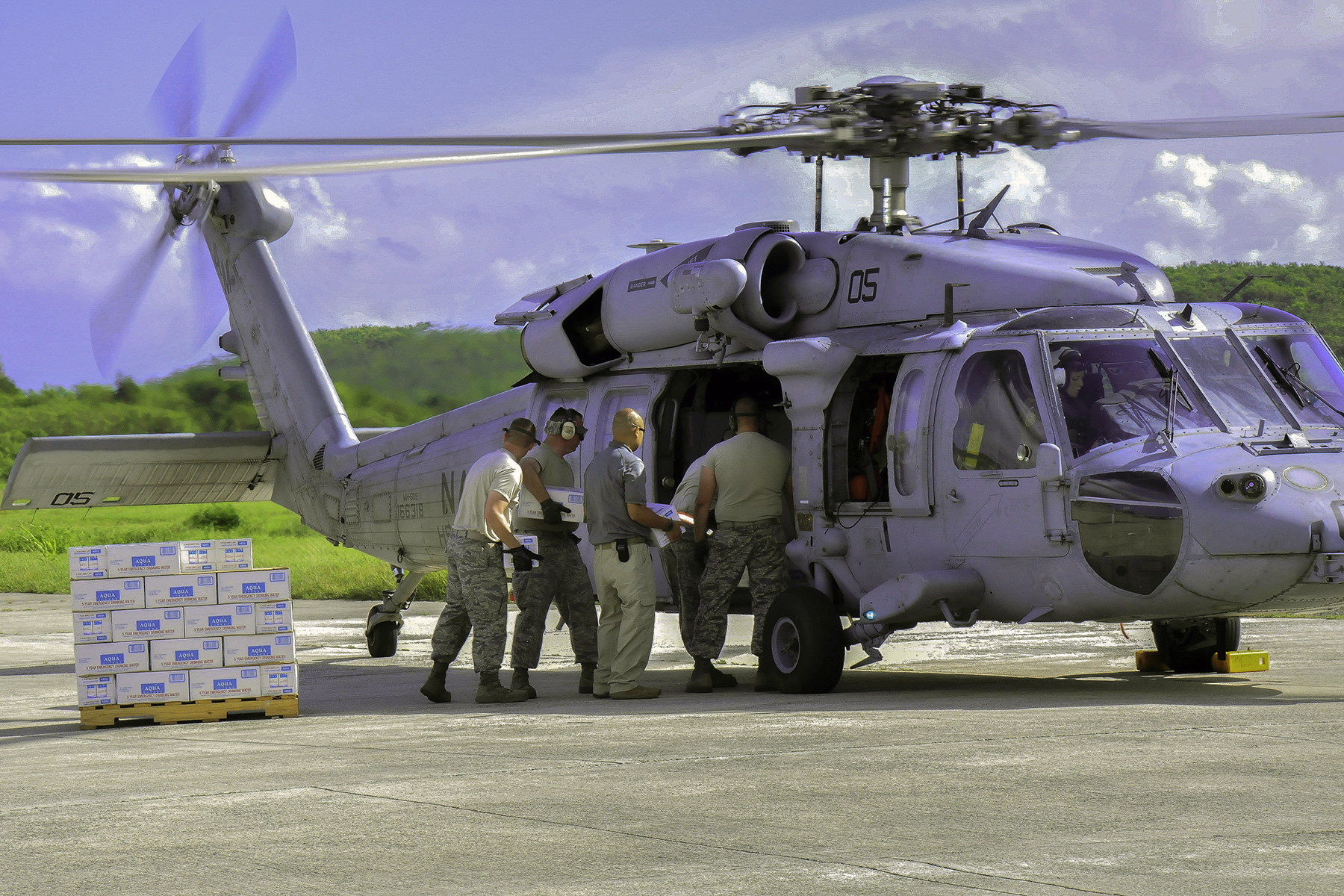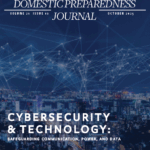The recent increase in both global tensions and the frequency of natural disasters should spur discussion about the overlooked concept of national security emergencies. Revisiting this concept can help leaders more rapidly and effectively address modern threats.
Emergency managers in the United States are overstretched having to address increasingly frequent and more deadly disasters. This mission is complicated by increased tensions with nuclear-armed authoritarian dictatorships because many of the same resources are needed to address both natural hazards and warfighting. Unfortunately, U.S. policy solutions adopted since the end of the Cold War conceive a world where disasters are relatively small or regionally localized, with military support available to supplement civilian and private sector resources. This inaccurate model is even less accurate now. Instead, leaders should revisit the national security emergency concept and how to apply it to the problems of today and tomorrow.
Cold War Fears
Along with the hair bands, yuppies, Live Aid, and other cultural trends of the 1980s was the renewed threat of nuclear war with an increasingly belligerent Soviet Union. This danger was the focus among professionals across the U.S. and, in particular, by the Federal Emergency Management Agency (FEMA) established in 1979. Mostly forgotten now is that FEMA was born in large part from civil defense efforts during the Cold War. In fact, the Latin motto on the FEMA flag translates to “Service in Peace and War” because the threat of a catastrophic attack on the United States was its primary concern when the agency was founded.
National policy documents and other guidance promulgated during the 1980s tasked agencies to prepare for nuclear war, with natural disasters considered a secondary concern. President Ronald Reagan captured the culmination of this approach in Executive Order 12656: Assignment of Emergency Preparedness Responsibilities in 1988. The Executive Order (EO) makes clear in the preamble that:
The policy of the United States is to have sufficient capabilities at all levels of government to meet essential defense and civilian needs during any national security emergency. A national security emergency is any occurrence, including natural disaster, military attack, technological emergency, or other emergency, that seriously degrades or seriously threatens the national security of the United States.
The sections that follow within EO 12656 include specific responsibilities for all levels of government, unique coordination responsibilities to address these threats, and the establishment of a permanent FEMA liaison to NATO Headquarters in Belgium. It is also clear that the EO addresses the perceived “Evil Empire” of the Soviet Union, given that the term “nuclear” appears 27 times in the 33-page document. However, the broad national security emergencydefinition allowed flexibility for problems like catastrophic earthquakes and pandemics, which might also cause severe consequences that endanger U.S. security.
Shifting Priorities
The nuclear threat posed by the Soviet Union receded with the fall of the Berlin Wall in 1989 and the almost simultaneous rise in deadly natural disasters in the U.S. These events forced FEMA and the federal government to serve as the “cavalry” that actively supports the natural hazards response as its primary mission. The shift away from nation-state threats as the central concern accelerated in the 1990s and early 2000s when the threat of international terrorism and the formation of the U.S. Department of Homeland Security (DHS) led to the most significant reorganization of the federal government since the end of World War II.
Among the many changes that followed was bringing a separate cabinet agency – FEMA – under the newly established DHS with a mission focused primarily on terrorism, borders and immigration, and cybersecurity. The formation of DHS also included new policy prescriptions to guide the national response to major incidents. However, with DHS’s mixed record during Hurricane Katrina and the 2009 H1N1 pandemic, it was unclear whether these changes in organization and authority would lead to positive results. Excluding any mention of hostile nation-state threats in the 15 National Planning Scenarios developed during this period also highlights a lack of interest in this enduring problem from the past, in addition to those present during the early years of DHS.
Conflicting Guidance
Following Hurricane Katrina, Congress provided updated legal authorities in 2006 concerning national incident management. The National Preparedness System replaced the planning scenarios in 2011. Then, in 2016, the president issued further incident management guidance that set an expectation for federal agencies with the most applicable statutory authorities and relevant capabilities to take charge of a national incident response with support provided by FEMA. However, the implementation of this latter document was hindered by the fact it was not made public until 2022. In addition, it did not specifically cite the unique emergencies, where government “czars” develop short-term, high-visibility solutions with limited operational reach as its intent. This implementation created confusion when trying to decide which policy framework is best-suited to a particular incident.
Each attempt to provide appropriate incident management direction was intended to fix the challenges that were present at the specific moment each was published. Unfortunately, nearly all these additions occurred without rescinding or revising the older documents. The result was layers of confusing guidance for federal agencies attempting to address the current threat landscape and emerging incidents within it. These documents were also published before attention shifted back to the re-emergence of peer and near-peer international competition and the unique challenges this will place on military and civilian officials. These roles are responsible for supporting military operations, responding to attacks on the homeland caused by adversaries during a contested deployment of U.S. forces, and managing scarce resources needed to continue responding to natural disasters without having clear guidance explaining how to support these missions simultaneously. The result is a hodgepodge of guidance developed since the late 1980s to address threats of the past that will likely impede attempts to address threats of the present and future.
Way Forward
All is not lost. First, despite being overworked and under-resourced, the emergency management community is increasingly experienced and adept. The storms, fires, floods, pandemics, etc., have created a generation of well-trained emergency managers, though worn by these experiences. Second, the overlapping authorities and confusing policy guidance provide potential readymade solutions. However, they must be updated, deconflicted, and exercised before professionals employ them.
This alignment work should start at the top and work down. It is time to revisit EO 12656, including defining a national security emergency and the responsibilities assigned to each listed federal agency and their emergency coordinators. In addition, the revision should consider FEMA’s role in supporting the overall preparedness and response to these incidents.
Next, more recent yet disconnected policy guidance developed since the establishment of DHS should be updated, including Homeland Security Presidential Memorandum 5, signed by President Bush in 2003. The document shares essential provisions, including what became the National Response Framework and National Incident Management System. However, incident management contradictions such as those that contributed to the poor response to Hurricane Katrina continue to distract DHS from core missions vital to national security and further complicate the response to large-scale incident management. The more recent Presidential Policy Directive 44 should also be implemented when complex incidents require additional coordination and proactive public messaging but not a massive mobilization of resources, such as COVID-19 or worse.
Finally, planning, training, and exercises should incorporate this organized and updated approach to address incidents up to and including national security emergencies. Should something catastrophic occur that threatens U.S. security, emergency managers would be ready to address this threat in parallel with the typical, yet growing, list of disasters and other emergencies.

Robert J. (Bob) Roller
Robert J. (Bob) Roller serves as the Federal Emergency Management Agency’s (FEMA) National Planning Branch Chief and formerly served as the Planning Division Director within the DHS Office of Policy. He is a frequent contributor to Domestic Preparedness, and the views expressed here do not necessarily represent the views of FEMA or the United States government.
- Robert J. (Bob) Rollerhttps://www.domesticpreparedness.com/author/robert-j-bob-roller/
- Robert J. (Bob) Rollerhttps://www.domesticpreparedness.com/author/robert-j-bob-roller/
- Robert J. (Bob) Rollerhttps://www.domesticpreparedness.com/author/robert-j-bob-roller/
- Robert J. (Bob) Rollerhttps://www.domesticpreparedness.com/author/robert-j-bob-roller/





